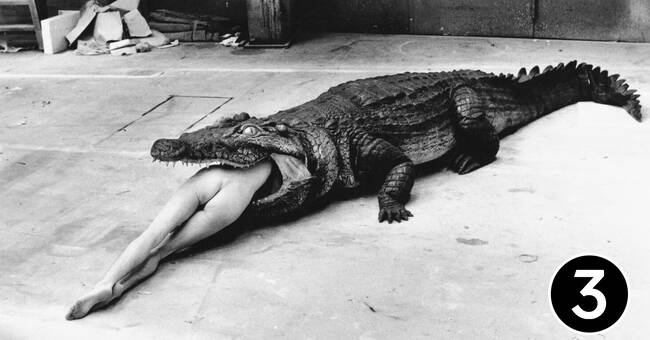An older man
who makes a name for himself by photographing young naked women in challenging positions.
If Helmut Newton had been active now, he probably would not have been active now…
Platform-shaped right into the shame corner of culture.
His nickname The prince of porn or The king of kink had not made things better.
He has been dead
since 2004 but at the same time a living legend, at least in fashion photography and - according to this acclaimed documentary - a man of honor who did not use his young naked models.
Sure, most of his pictures had a sexual, sometimes downright pornographic, character, but he was not there and fingered, sticking firmly to his wife and colleague June, whom he met at the beginning.
Why is it important?
You can tell the difference between a work and an artist, can't you?
Sure, but as you know it's tricky, and in a post-metoo landscape harder than ever.
Which is also one of the movie's tracks.
A few of the
many women who speak here are / were critical of what they thought was a sexist approach.
Actually, there is only one: the great critic Susan Sontag, while all of Newton's models interviewed (Catherine Denueve, Charlotte Rampling, Isabella Rossellini and many more) find deeper motifs in Newton's fashion and advertising photographs;
believes that he always gave his female objects a subject, a powerful character in an exciting narrative.
Well, you can guess an ounce of overcompensation here: a desire to give advertising images a depth they do not really deliver, but the old rocker Marianne Faithfull still puts her finger on something true when she talks with warmth and nostalgia about Helmut Newton and the sweet 60s , when suddenly - after a long taboo - it was okay to show naked.
She and the
documentary talk briefly and indirectly about the passage of time and the different faces of moral panic, about how provocateurs like Newton are needed, who create debate and thus move art forward.
He was Weimar right through, says Faithfull, referring to the German era between the world wars where free spirits like Bertold Brecht and Kurt Weill ravaged.
It's only there somewhere, around the middle of the film, that it gets interesting, which is a bit late.
Before that, we have been introduced to the aforementioned women's cavalcade, both dressed in the present and naked in the past - and no matter how fun it may sound, it will be a bit monotonous.
Tribute choirs are never particularly stimulating to listen to.
But when we are led further down the avenue of memories, to the upbringing in Hitler's Germany, and the flight from there, the human Helmut gets clearer and more exciting contours.
It also gives greater weight to the idea of the sexually charged photograph as an act of resistance in a puritanical environment.
Then as now.
Or he was just, as he said himself, "a professional fugitive".

